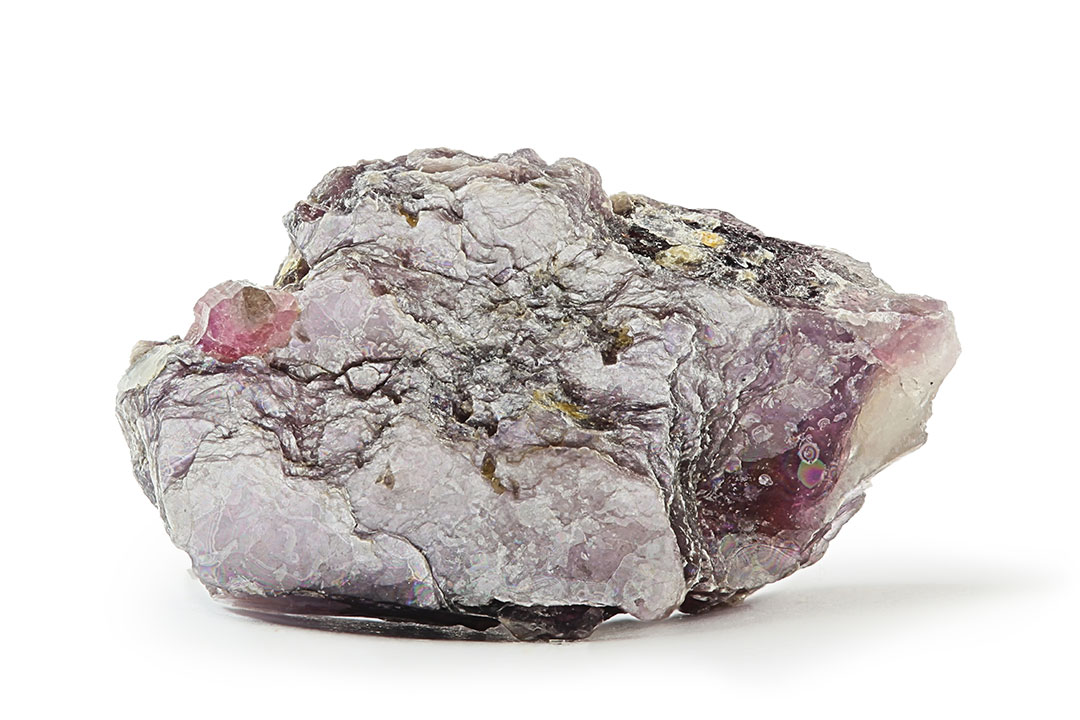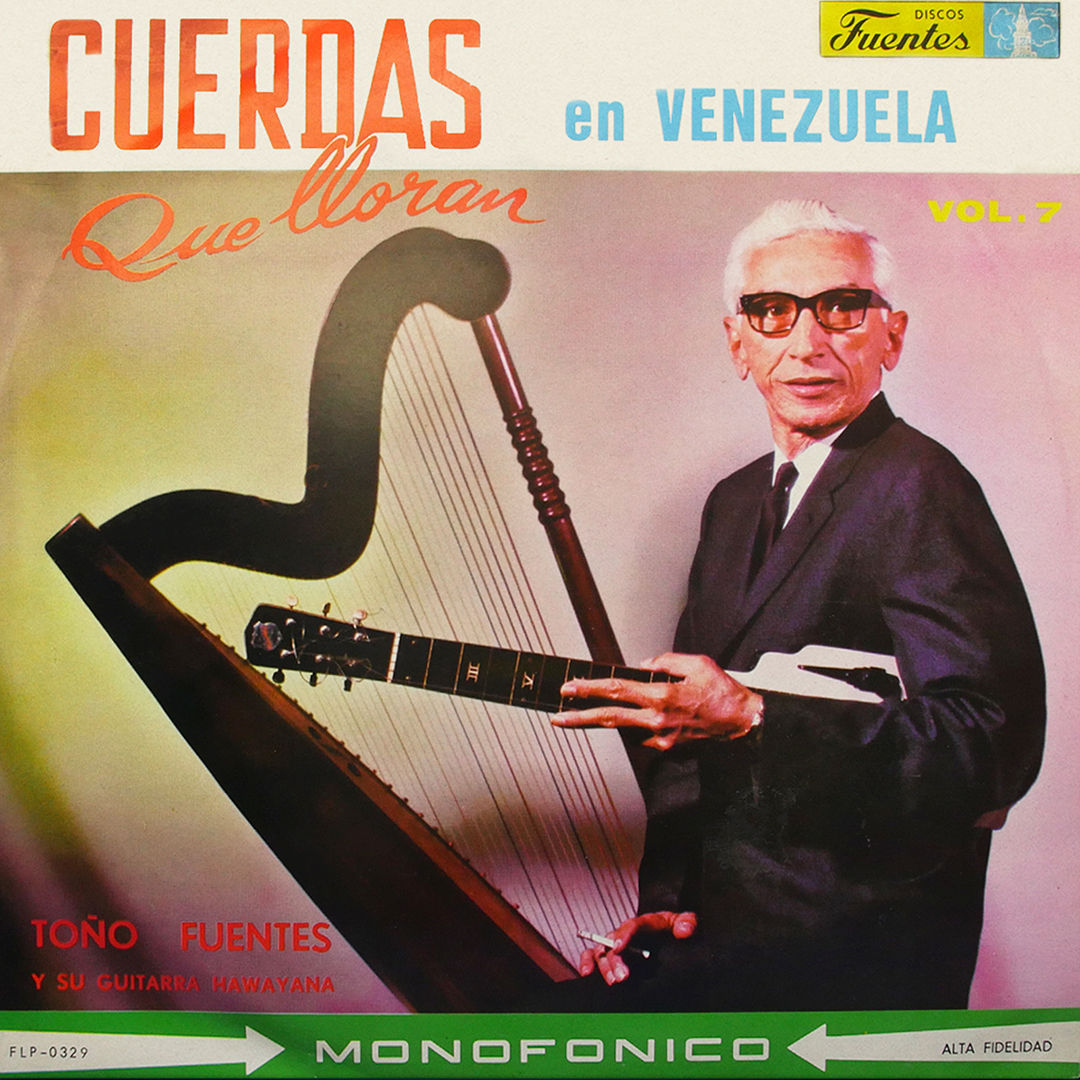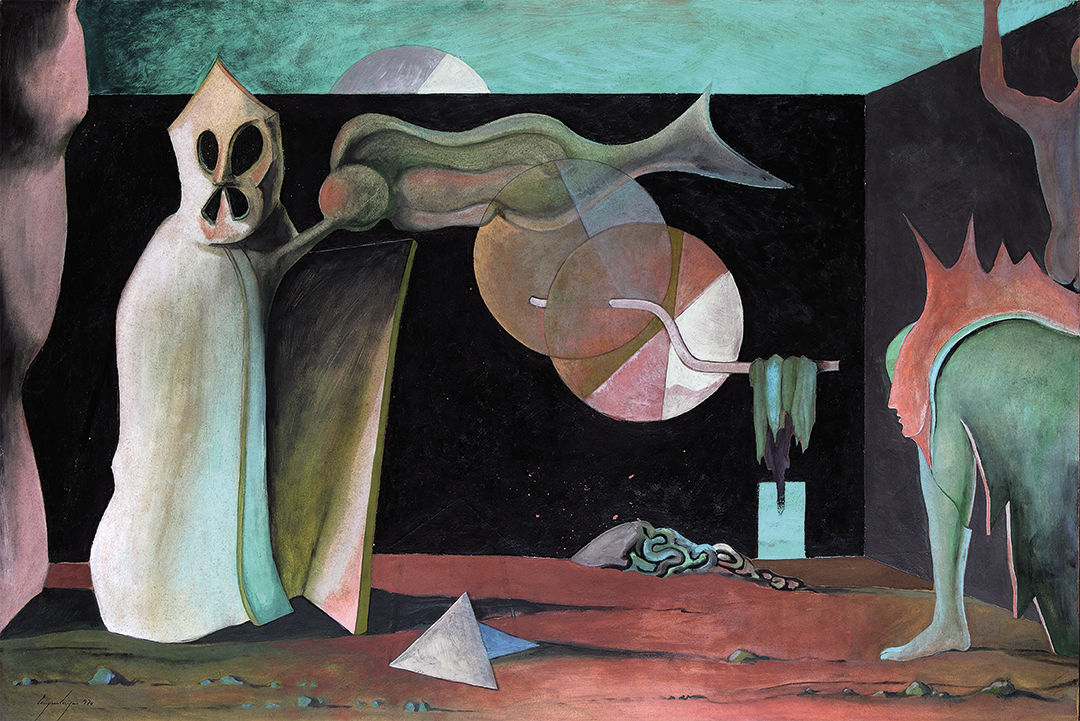
Indelible Expression of Soul
“I don’t have the time or money to really paint, so the only real thing you’ll find here is soul – those who have a soul,” wrote Artur do Cruzeiro Seixas in the notes on his first solo exhibition, held in Luanda, Angola, in 1953. He was one of most iconic surrealists in Portugal, but he never considered himself an artist. Indeed, he said the term conjured an image of someone “stuck up, with a goatee and bow tie à la lavandière,” that had a studio and sold paintings.
The “Master”, as he was referred to by his peers, did not like to sell his works, all of which fit perfectly inside the drawers at his many places of work. Like his first job distributing rations in an office in Lisbon during World War II. From time to time his boss would show up and the drawing taking shape would quickly be stashed away. He thus didn’t consider himself to be an artist, but “just like everybody else, except that I paint”.
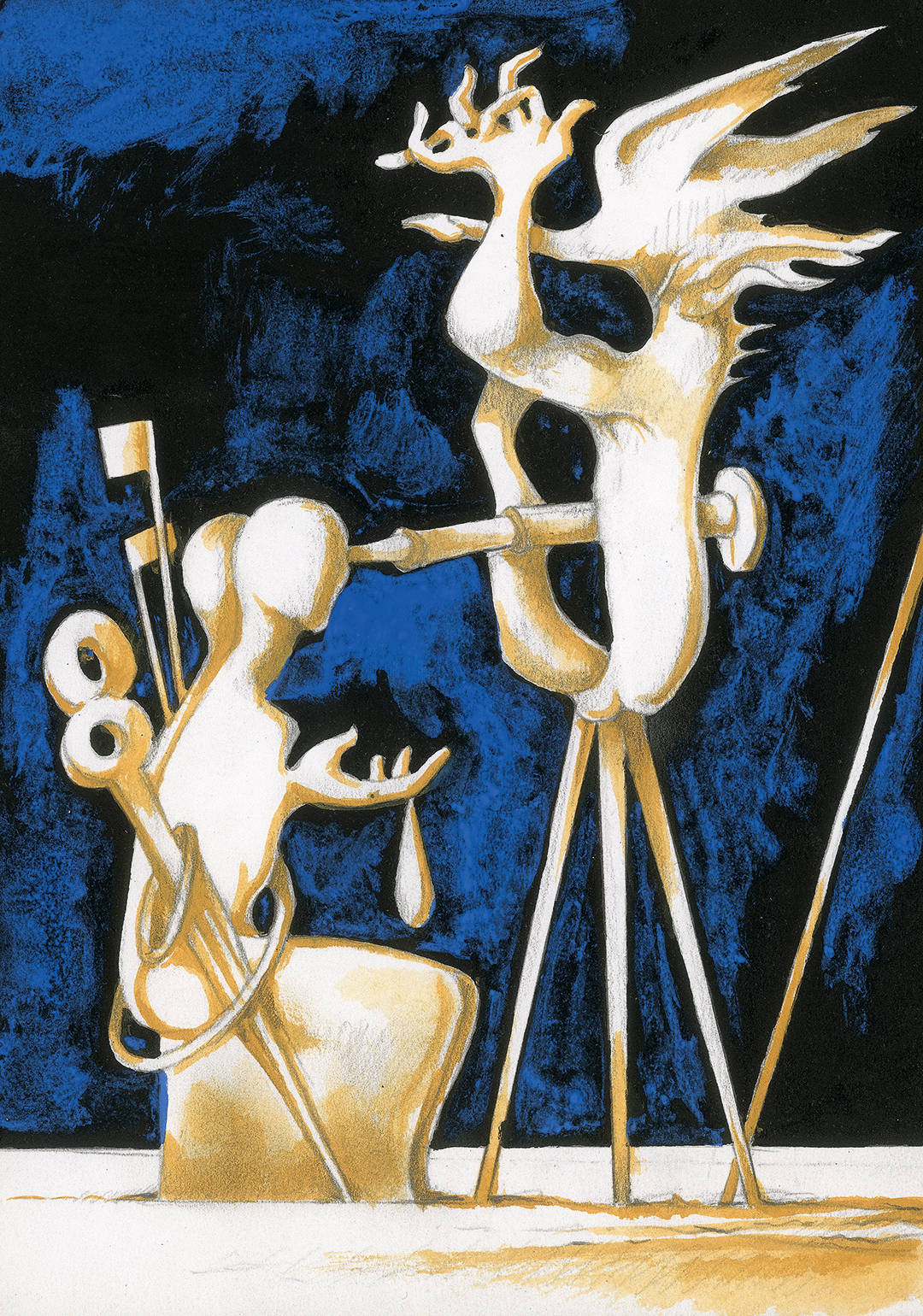
If for this “man who paints”, surrealism was a moral philosophy, then painting, sculpting and poetry were the instruments that breathed life into it. He found his “breath” at the age of five. His mother couldn’t afford to buy toys, so she would give him a pencil, paper and rubber. Then, she would make little holes in his drawings and hang them with a string on the door latches, creating veritable art exhibits in their house in Estoril. This is how Cruzeiro Seixas began creating his world, “his meticulous disorder”, his “confounding force”, in the words of Mário Cesariny (1923-2006), Portugal’s main proponent of the cultural movement that emerged in the 1920s. Cruzeiro Seixas first met Cesariny at the Antonio Arroio School of Decorative Arts and he became one of the most influential people in his professional and personal life. According to Galician philologist Perfecto E. Cuadrado, coordinator of the Portuguese Centre for Surrealism, they were united “by a passion intertwined with threads of admiration and enthusiasm that would sometimes see them portraying more or less explicit figures of estrangement and criticism.”
Cruzeiro Seixas, Untitled, 2001
Graphite, gouache and Indian ink on paper
Cupertino de Miranda Foundation Collection
Much like other artists of his generation, Cruzeiro Seixas was seduced by neorealism (1945-1946). However, artistic restlessness and the desire for aesthetic and ideological freedom led him to surrealism. His fine, yet delicate and precise brushstrokes never strayed from this incomparable philosophy. He embraced it in 1949 when he joined the anti-group “Os surrealistas”, founded by Cesariny in response to the strict obedience to the dictates of Paris by the artists in the “Grupo Surrealista de Lisboa”.
Two years later, he joined the merchant navy, travelling through Africa, India and the Far East and eventually settling in Angola until the colonial war broke out. It was there, born out of the solitude that distance brings – “my solitude, constructed, found and imposed” – that he found inspiration for almost all of his poetry, a dimension of his work that was little known until two decades ago. His poems were collected and arranged by his friend Isabel Meyrelles, herself a sculptor and poet and part of the surrealist movement, who published them in 2002 in a poetry book entitled “Obra Poética” (reprinted and expanded in 2020).
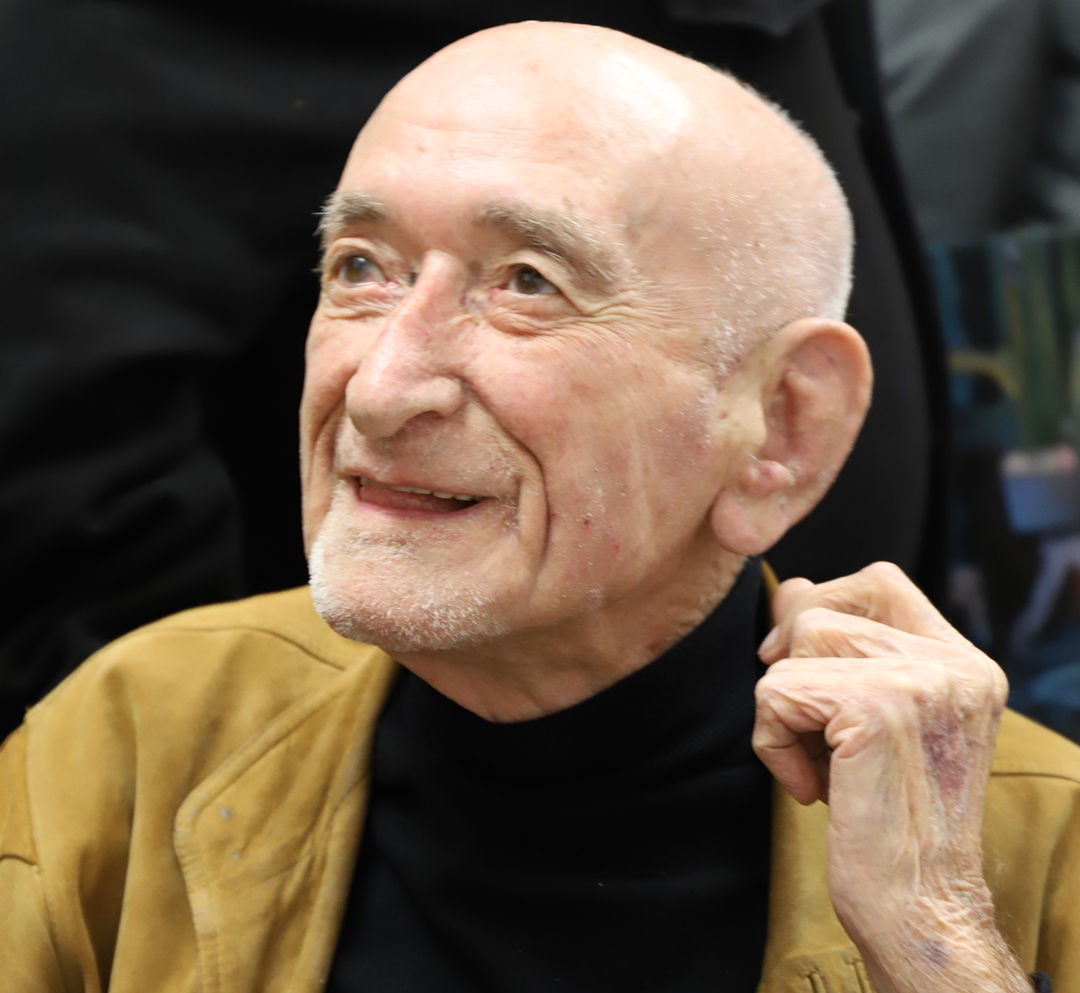
ARTUR DO CRUZEIRO SEIXAS
Amadora, Portugal
3 December 1920 – 8 November 2020
SURREALIST ARTIST
Creator of a diversified body of work, the master of lunar landscapes populated by ambiguous beings incorporated traces of African art, the metaphysical painting of Giorgio de Chirico and the organic and elegant metamorphoses of Salvador Dali. In his figurative art, he often used elements such as horses – that “fly, fly, fly like a shriek that awakens the plants contemplating eternity” – ships or body parts pierced by arrows, creating a heightened romantic tension between reality and desire.
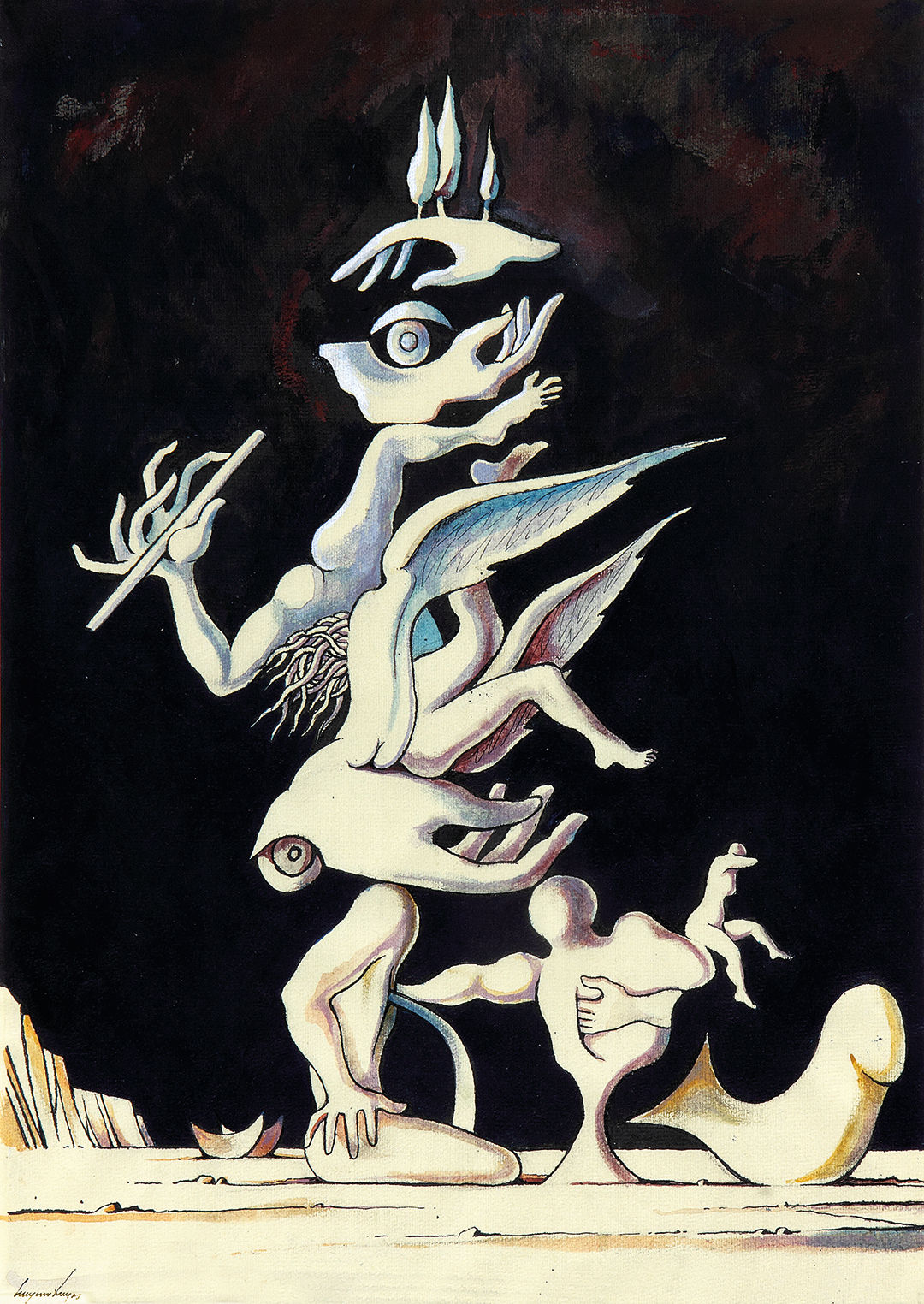
Most of the Artur do Cruzeiro Seixas collection can be found at the Cupertino de Miranda Foundation in Vila Nova de Famalicão in the north of Portugal, where the artist lived between 2012 and 2016 (until he moved to the Casa do Artista retirement home). More than 400 works of art, a collection that also includes poetry, photographs, handwritten notebooks, correspondence and books from his personal library, along with the 42 volumes of his album “Diário não Diário” filled with notes, collages and sketches. In 1999, the collection was acquired for a symbolic price by the then president of the foundation (and also son-in-law of the founder and brother of Isabel Meyrelles), João Meireles, and then donated to the institution. The donation has enabled the Cupertino de Miranda Foundation to continuously celebrate the legacy of Cruzeiro Seixas, whether through its dedicated exhibition area, the art exhibitions it holds across the country or those it holds abroad, including, more recently, at the Metropolitan Museum of Art in the United States and Tate Modern in London.
Cruzeiro Seixas
“A arte sublime de inventar o que nunca existiu”, 1995
Watercolours and Indian ink on paper
Donated by Cruzeiro Seixas, Cupertino de Miranda Foundation Collection
LONG LIVE THE MASTER
Cruzeiro Seixas would have been 100 years old on 3 December 2020, but he passed away less than a month before (on 8 November), without getting the chance to see the “Cruzeiro Seixas – Insist on being poetry” exhibition inaugurated at the UNESCO headquarters in Paris, a solo exhibition with 80 of his works, documents and tapestries.
Organised by the Cupertino de Miranda Foundation as part of the celebrations of World Portuguese Language Day, the inauguration was scheduled for 5 May of that year, but was postponed twice due to the Covid-19 pandemic (it is currently scheduled to open in 2022). The Foundation’s artistic director, Marlene Oliveira, has put her heart and soul into this exhibition, because “it was a dream of his”. She nostalgically recalls “a man of strong convictions, and a keen sense of criticism.
And he didn’t only show an interest in surrealism… although he was not a religious man, he liked to visit churches, because of their beauty, their baroque altars, the gilded art and detail. He replicated that detail in his work. His quill drawings are one of the things that fascinate me most. The precision… we used to ask how someone that could draw with such detail could be a talentless art student (laughing), as he used to refer to himself.”
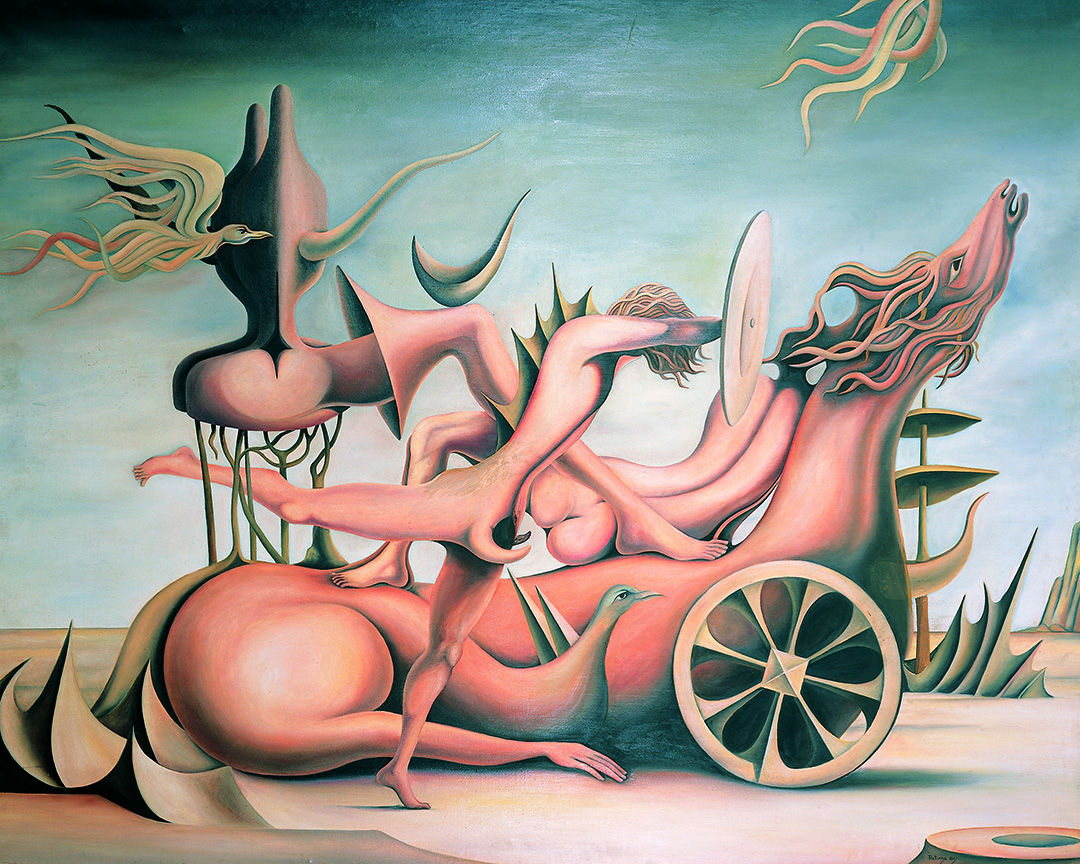
Oil on canvas
Cupertino de Miranda Foundation collection
To celebrate his 100th birthday, the Foundation published a book of poems and illustrations entitled “Eu Falo em Chamas”, a facsimile edition of the 1986 handwritten original. This was followed by a 100 print run of Rei Artur Surreal, a book-art object published by Galeria Perve. Painter, poet, set designer, illustrator, collector and also curator of countless artists who he helped launch and promote, Cruzeiro Seixas was awarded the title of Grand Officer of the Order of Saint James of the Sword in 2009 for his artistic merit, and the Medal of Cultural Merit in 2020 for his undeniable contribution to Portuguese culture.
While to the average mortal eternity is equated to “living forever”, to the “Master”, according to one of his anti-mottos, “eternity is now or never”. But what is left of the now? “Nothing left of my time on earth will be defining, complete, explained. I didn’t have an audience, or friends, or love, that were truly worthy of the name. I did not live, but, curiously, I will leave behind documents of that non-life.” And what a full non-life it was…
